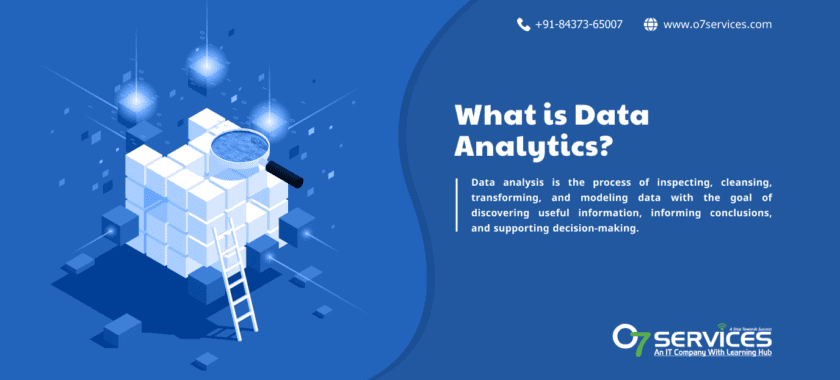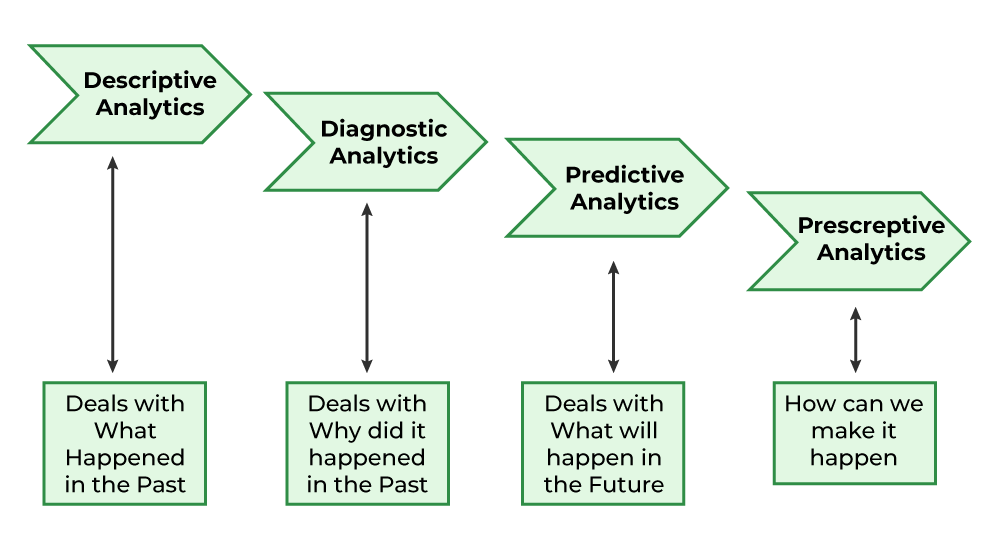
What is Data analytics in Simple Words – You’ve likely heard the term “data analytics” tossed around frequently in recent years. It’s now a buzzword and you could be wondering what all the fuss is about. Let’s simplify it into simple terms and discover the reason why it’s something that you need to consider even if you’re not a technology expert.
Let’s get started. Data analytics is the process of making sense of an array of data and numbers. Imagine it as your favorite detective in a crime and instead of finding clues, they’re working with databases and spreadsheets.

It’s like looking through your bank statements and figuring out where your entire bank account was – but at a greater scale. Governments, companies and even people use data analytics to identify trends solve issues and make better choices.
The issue “Why should I care about data analytics?” might be on your mind. Indeed, data analytics aren’t only for big, well-funded companies. It’s available to all and can benefit you in more ways than you realize.
1. Smart Shopping
Have you ever bought something online? Yes, of course you have. The suggestions that pop up when surfing? This is data analytics at work. It’s analyzing your previous purchases, browsing history and the items that other customers have purchased to suggest items you might enjoy.
2. Health and Fitness
Do you have a fitness tracker or health apps on your smartphone? Yes, you’re right is data analytics. This takes every bit of information it collects on your steps heart rate, and your sleep, and converts it into insights regarding your health. It will help you make healthier choices and monitor your improvement.
3. Entertainment
Netflix and chill Who’s with me? The shows and movies recommended to you are inspired by what you’ve seen before. It’s all about anticipating what you’ll like next. Data analytics help you identify your next favourite series to watch.
4. Personal Finance
Do you want to make your budget more efficient? The use of data analytics will help monitor the spending patterns of your household, find areas where you could save money, and even forecast the future health of your finances.
Okay, let’s look at the process of how magic occurs without getting too technical.
In the beginning, you collect information – plenty of it. It can range from sales figures, and posts on social media to temperature readings. The data’s insights are enhanced as the quantity increases.
The data can get messy. It’s like trying to build an intricate puzzle that has no pieces. Data analysts take it apart to eliminate duplicates and make sure that it’s ready to be analyzed.

That’s where the excitement starts. Utilizing various tools and methods Data analysts go through the data in search of patterns or trends and also insight. They may employ graphs charts, charts, or even sophisticated algorithms, but the purpose is the same: for them to help answer queries and resolve issues.
Have you ever seen a graph that can explain something complicated in a flash? This is data visualization. It assists in making the data easier to understand and practical.
After you’ve gathered the information you need, you’ll be able to make educated decisions. This could include anything from tweaking the marketing strategy to improving your health.

Let’s simplify things and keep it straightforward. There are four primary types of data analytics and I’ll break down them for you without the jargon.
Descriptive analytics functions as an historical book of your personal data. It reveals what has was happening over time. Imagine that you’ve got a lot of sales information and you’d like to find out which product was did the best in sales in the last month. This is descriptive analytics. It depicts the past in order to comprehend it better.
Let’s go to the diagnostic analytics. It is here that we go into the depths of. It doesn’t only inform you about what happened, it seeks to determine the reason for what took place. If you find out that a specific product was most sought-after this month (thanks to descriptive analytics) Diagnostic analytics help to determine the reason. Perhaps it was due to a successful advertising campaign or seasonal trend. It’s like being a detective to your information.
Predictive analytics is focused on the future. It gathers data from the past and applies it to make predictions. For instance, let’s say you want determine the quantity of the top-selling item you’ll sell in the next month. Predictive analytics utilizes sales from the past as well as market trends as well as other factors to provide you with an estimation. It’s similar to having a crystal ball that can help you make business decision-making.
We also have prescriptive analytics. This kind of analytics doesn’t be limited to forecasting the future but also informs you what actions you should do. Returning to our example that predictive analytics predicts you’ll see more sales of this product next month then prescriptive analytics could suggest expanding production or launching an entirely new marketing campaign. It’s like having a knowledgeable consultant telling you the most effective option.
Data analytics is akin to having a superpower in the age of digital. It can assist you in making better choices, save time and money, and live a more healthy life. Don’t let the complicated terminology put you off. Be open to that power to make the most of your data. If you’re planning the next Netflix movie or planning your budget, analytics using data can be your trusted ally. Happy analysis!
Leave a Reply